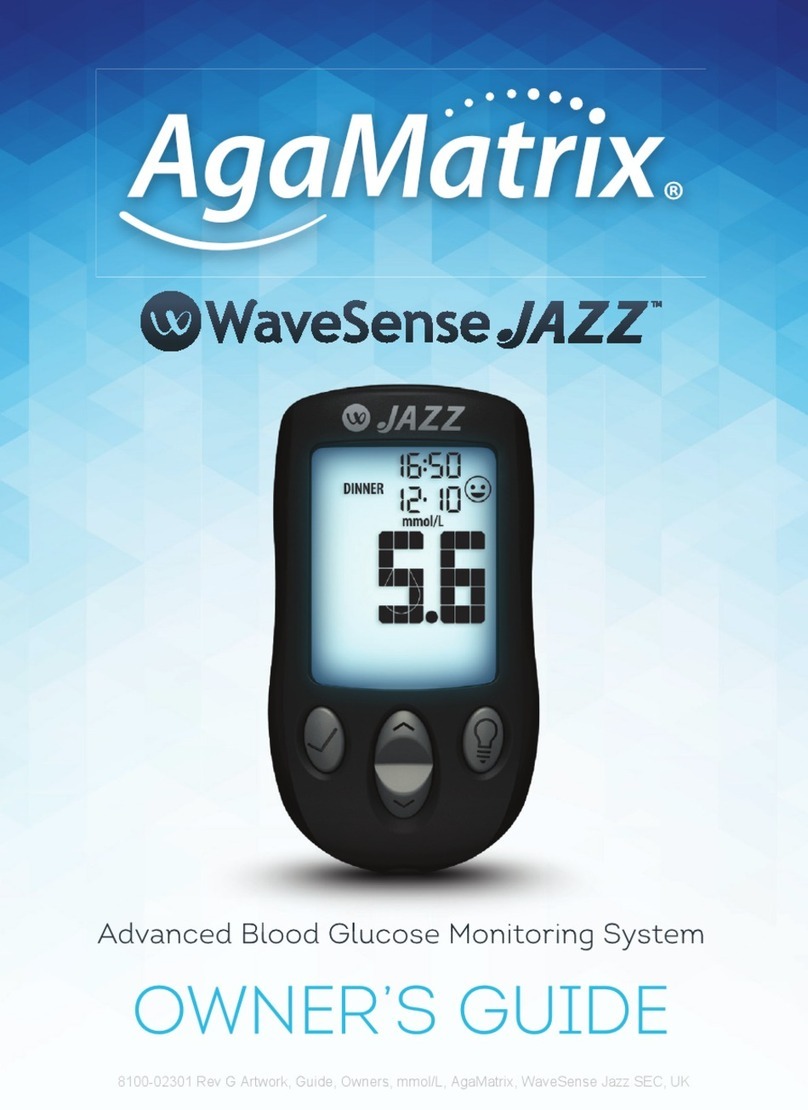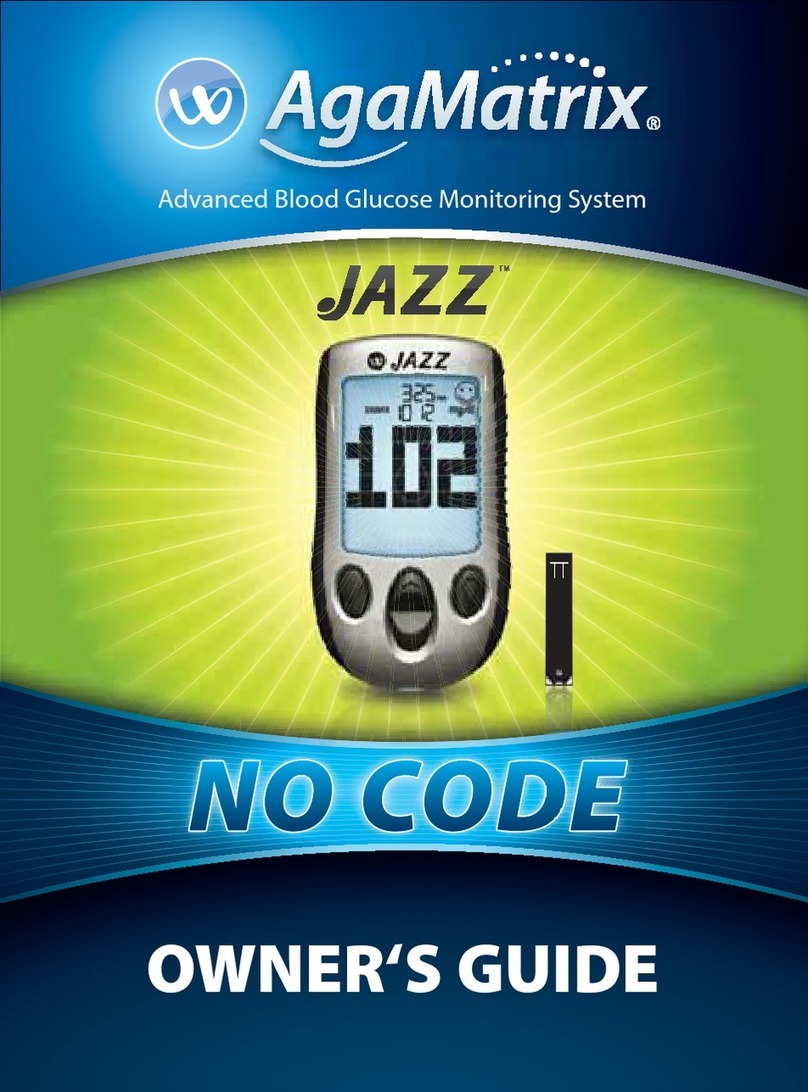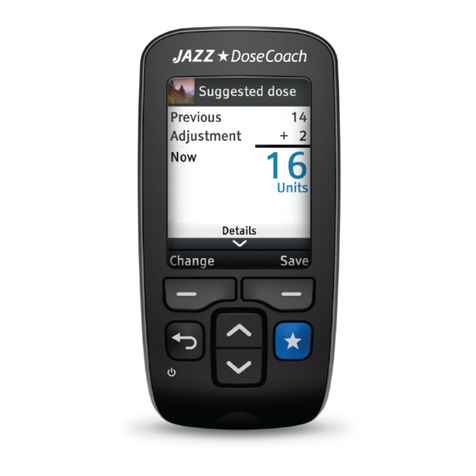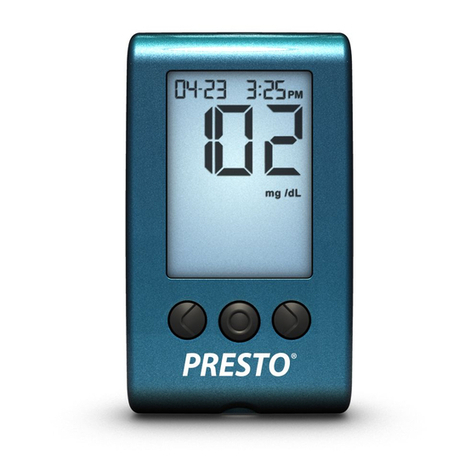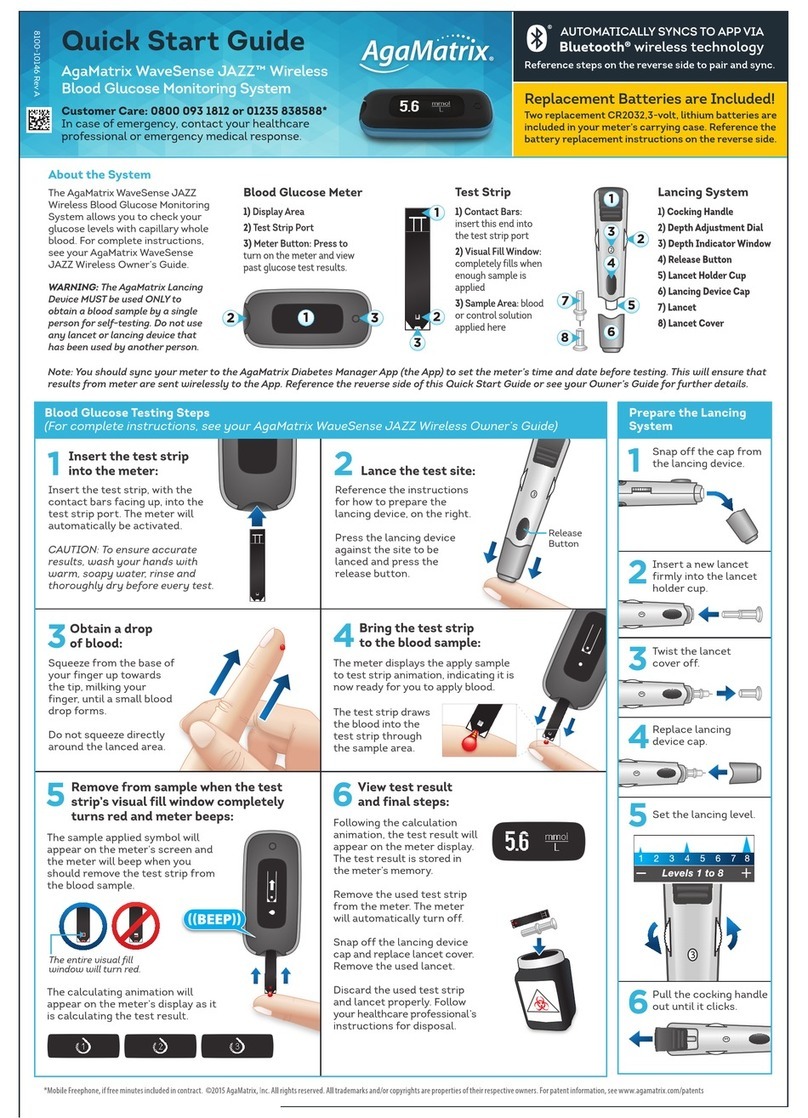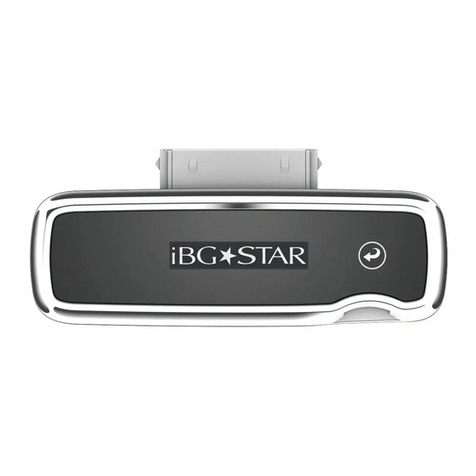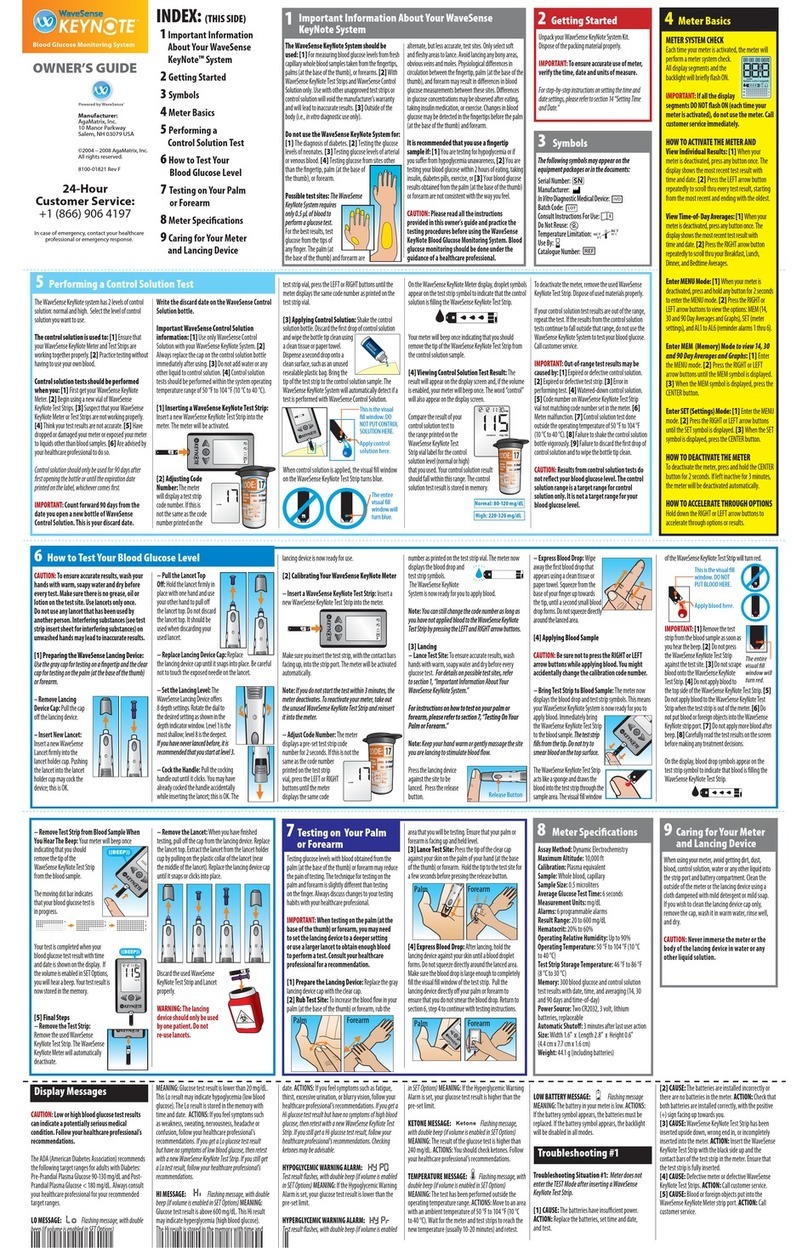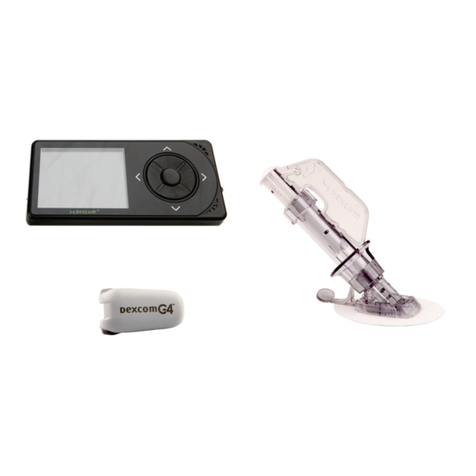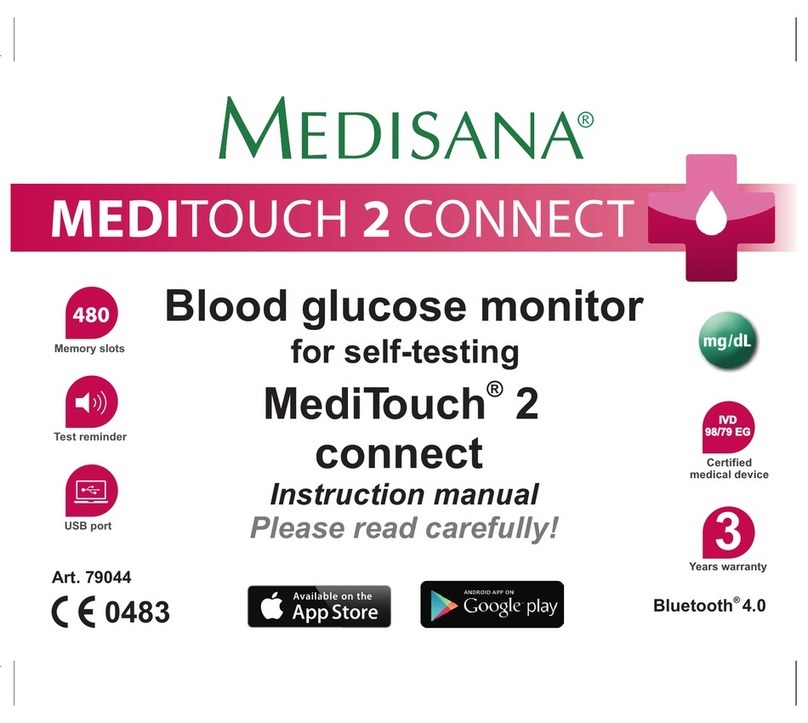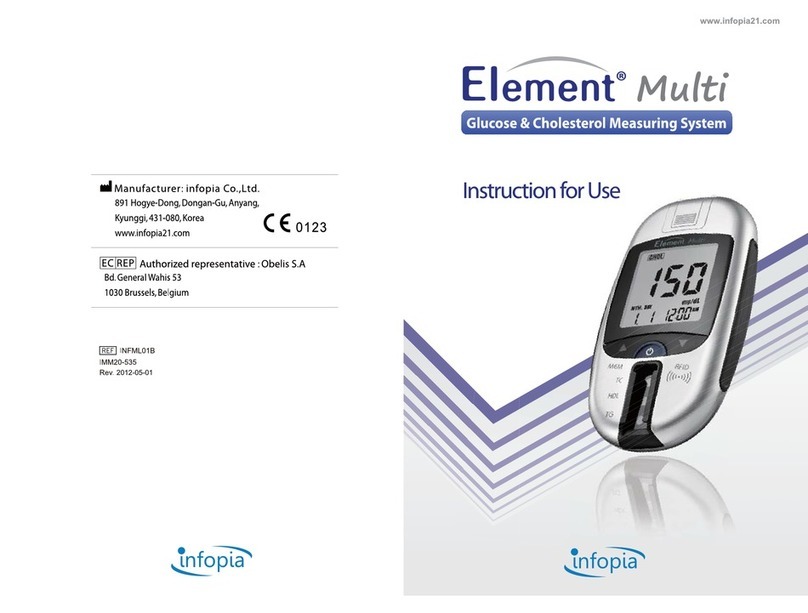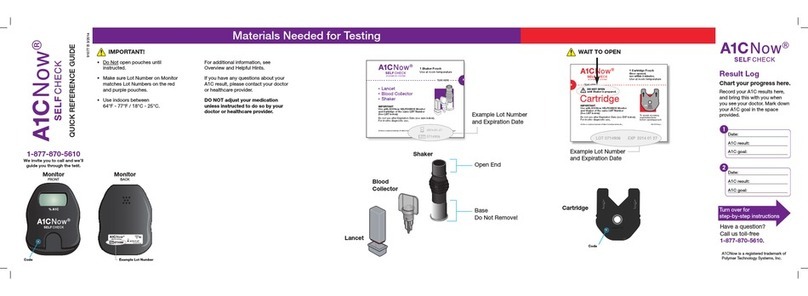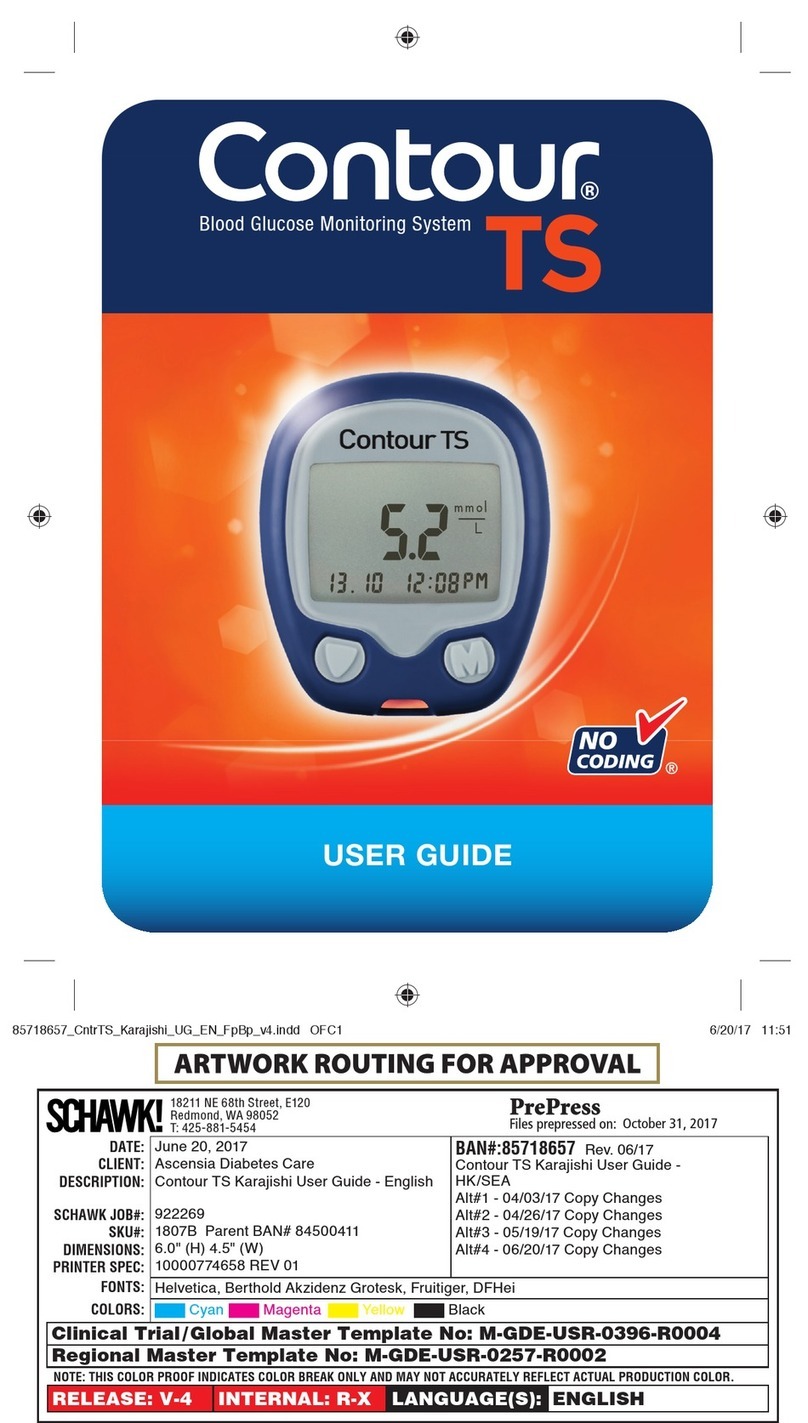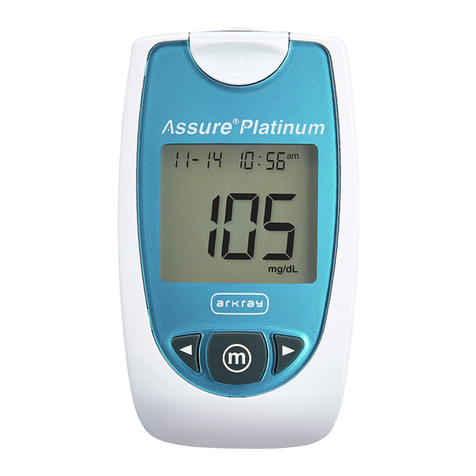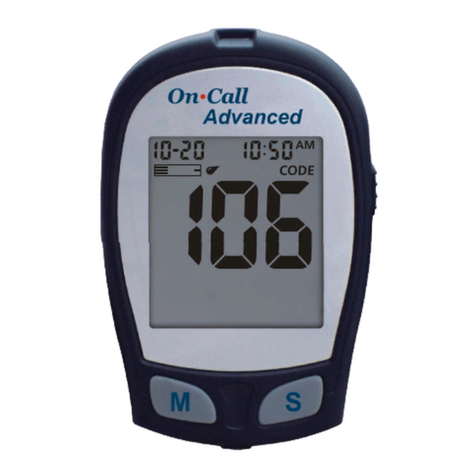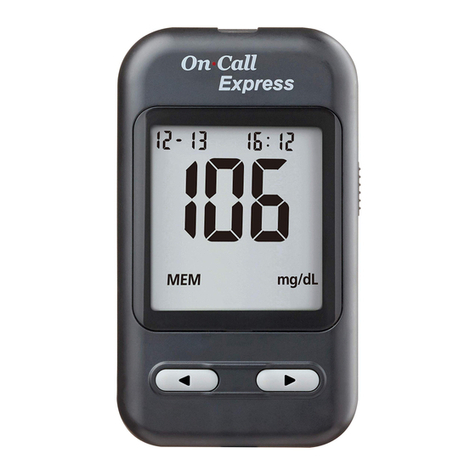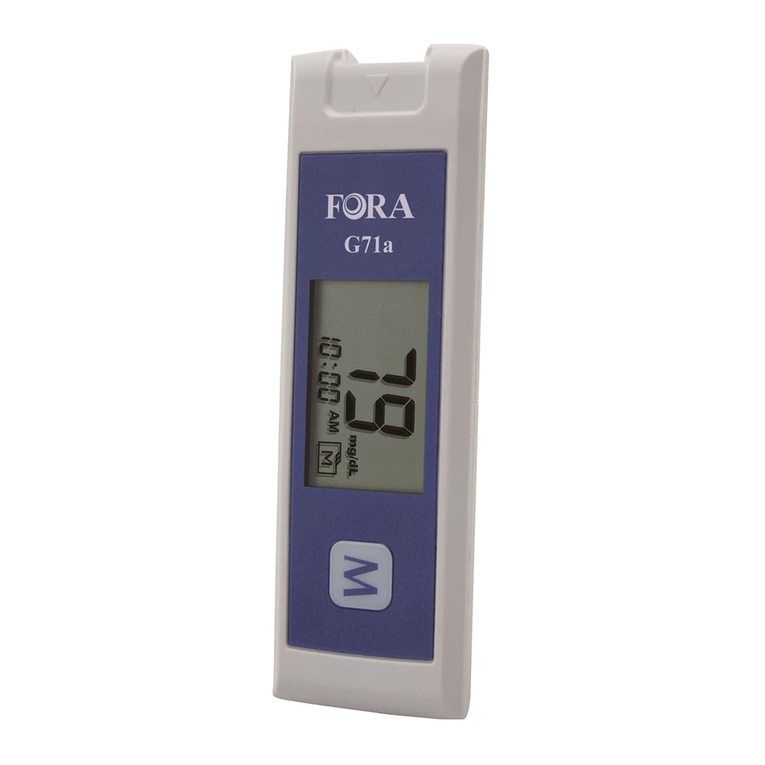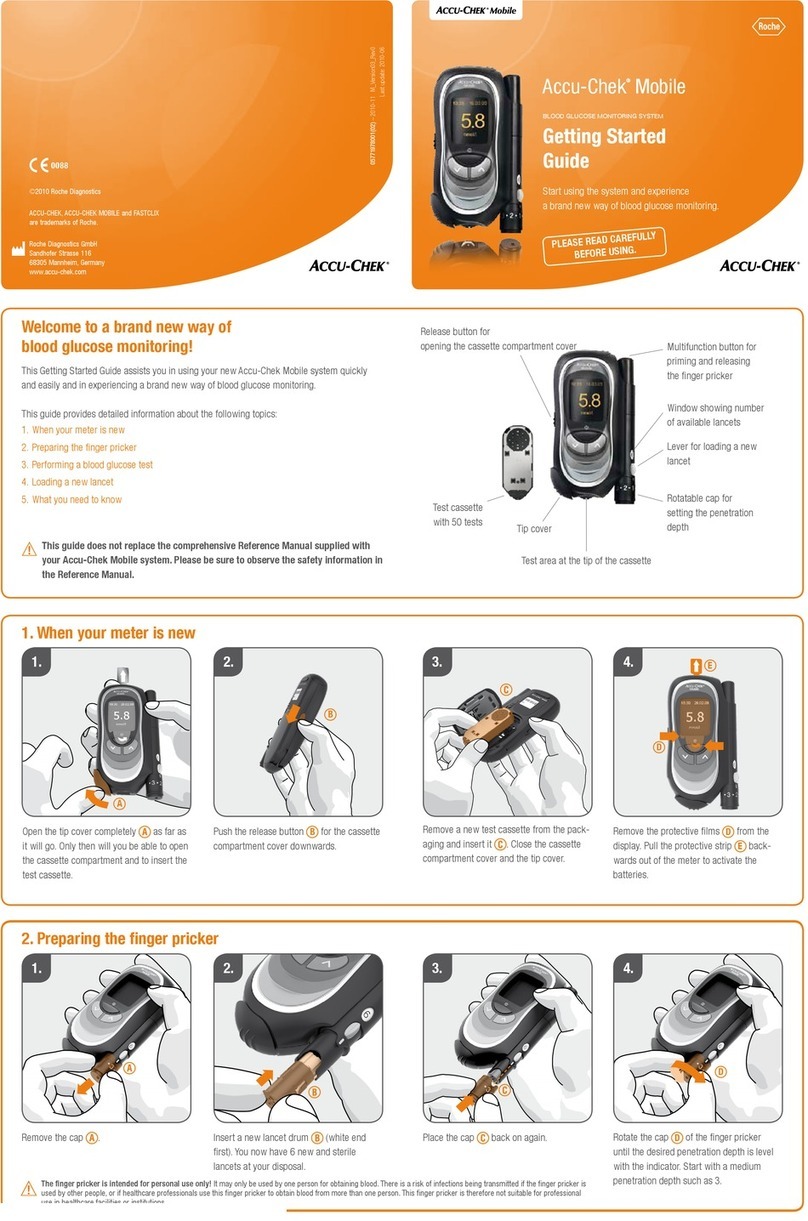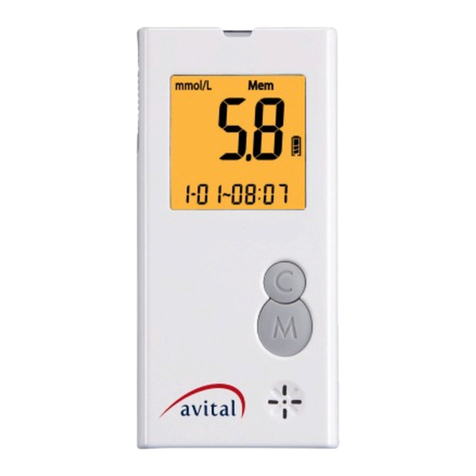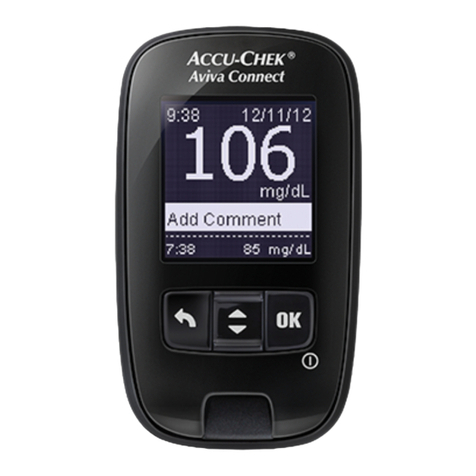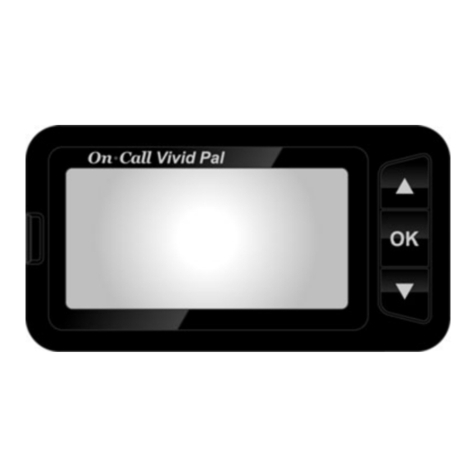
5
Do not use the system for:
[1] The diagnosis of diabetes.
[2] Testing the glucose levels of neonates (children under 4
weeks).
[3] Testing glucose levels of arterial or venous blood.
[4] Testing glucose from sites other than the fingertip, palm
(at the base of the thumb), or forearm.
Possible test sites:
The system requires only 0.5 μL of
blood to perform a glucose test.
For the best results, test glucose
from the tips of any finger. The
palm (at the base of the thumb)
and forearm are alternate, but less
accurate, test sites. Only select soft
and fleshy areas to lance. Avoid lancing any bony
areas, obvious veins and moles.
Physiological differences in circulation between
the fingertip, palm (at the base of the thumb),
and forearm may result in differences in blood
glucose measurements between these sites.
Differences in glucose concentrations may be
observed after eating, taking insulin medication, or exercise.
Changes in blood glucose may be detected in the fingertips
before the palm (at the base of the thumb) and forearm.


